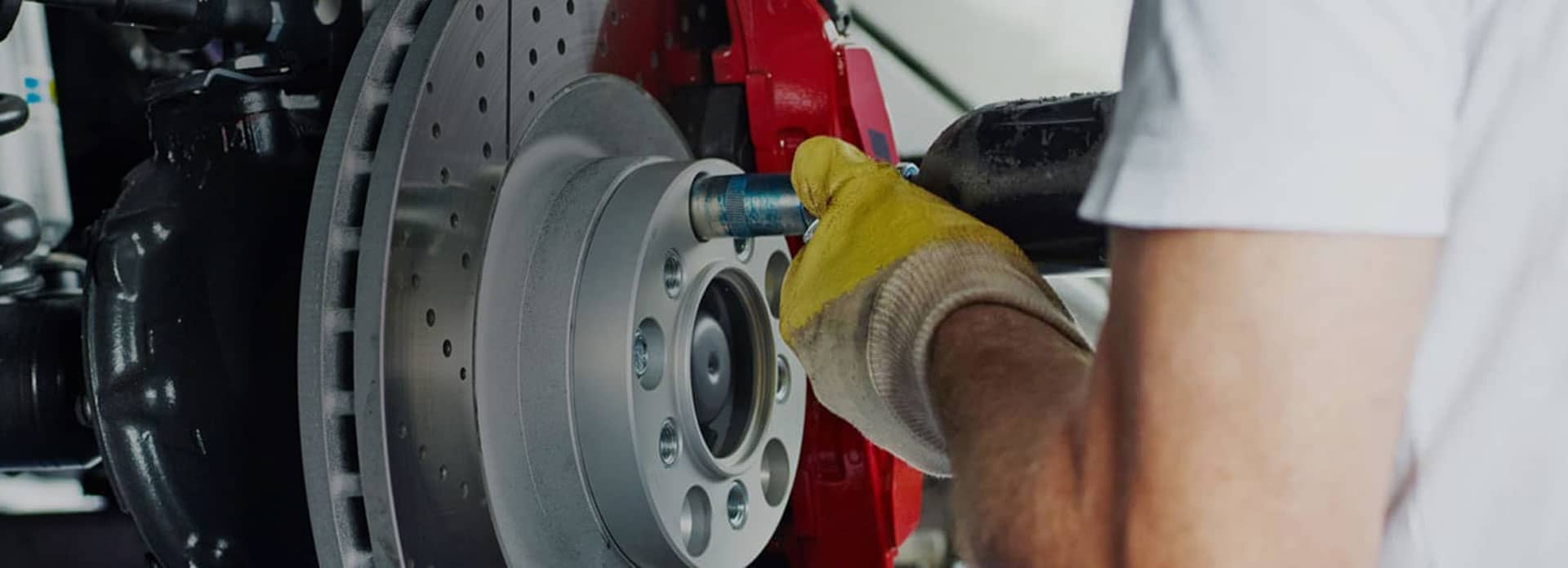
AUTONET TV
Archive for July 2024Smooth Operator (Shocks and Struts)Posted July 28, 2024 5:04 AMFew of us ever drive somewhere without encountering some pretty rough roads, and it's amazing how well our vehicles are able to smooth out the ride. Thank your shocks and struts. The two parts are similar. Some cars have shocks in the rear, and struts in the front. Others have struts all around. A shock absorber uses a cylinder filled with gas or liquid that's connected to your vehicle's frame and axle. When your vehicle encounters an imperfection in the road, the shock dampens the motion. A strut is essentially a shock absorber mounted inside a spring and can support more weight than a shock by itself. Shocks and struts take a lot of punishment and wear out. When they do, your tires are not contacting the road as much as they should, and that can result in a bumpy, unstable ride. Worn-out shocks and struts also transfer the impacts of road imperfections directly to your vehicle's body which can cause further damage to other parts. You can tell when your shocks and struts are wearing out when your vehicle's ride is bouncy, you feel the bumps and body motion a lot more than you used to, or you may see fluid leaking from the areas near the wheels. How often your shocks and struts need replacing depends on what surfaces you drive on, how far they've traveled, and how long they've been on the vehicle. Our technicians can check the condition of your shocks and struts and advise you when they need to be changed. Shocks and struts should always be changed in pairs. Because shocks and struts wear out gradually over a long time and distance, experts recommend you have them checked at least once a year. Plus, if you know you've recently hit something especially hard in the road, you should have your suspension checked just to make sure it's ok. East Coast Automotive Services A Bumpy Ride (Strut Assembly Replacement)Posted July 21, 2024 5:03 AMIf you’ve noticed your vehicle’s ride has lately been bumpy or you’re hearing strange noises when you drive over bumps, you may need new struts. The strut assembly is part of your vehicle’s suspension system that’s used to absorb the irregularities on the surfaces you drive on. You have probably heard of shocks or shock absorbers. A shock is a piston with gas or liquid inside. When you hit a bump, that shock absorbs the blow. Struts are similar to shocks but they also have a coil spring for extra strength. They’re often used in the front of the vehicle because of the engine’s extra weight. As you might imagine, your struts take a beating every day. Eventually, they will wear out, and your wheels and tires won’t stay connected to the road as well as they used to. In addition to a bumpier ride, you may notice your tires starting to wear with failing struts because those tires aren’t in contact with the road surface as evenly as they used to be. When you bring your vehicle in to us, we’ll run some tests to determine what’s going on and what condition your suspension components are in. Your vehicle’s manufacturer recommends struts to be replaced at certain intervals, and it’s important to change them out with the same type of equipment. They should always be replaced in pairs on the same axle. After your struts are replaced, your suspension should be aligned so everything is headed down the road in the right direction. After that, driving should be smooth sailing. East Coast Automotive Services What's in a Number? (What Tire Numbers Mean)Posted July 14, 2024 6:38 AMYou've probably never paid much attention to the writing on the sides of your tires, but they contain a wealth of information. There's a long combination of letters and numbers that can tell you a whole lot about what tires your vehicle was designed to be riding on. Let's check out this example found on an SUV: P245/70R17 108T. The first letter, P, means it's intended for passenger vehicles. If there's no letter, it means it's a metric tire. If there's an LT at the beginning or end that means a tire designed for light trucks. Moving on to our example, the 245 shows how wide the tire is in millimeters from sidewall to sidewall. The number that follows in our example, 70, means the height of the tire is 70% of its width. The letter after that in our example, R, describes the type of tire (on this vehicle, radial). Following that is the diameter in inches, in our SUV example, 17 inches. How much load the tires' sidewalls are designed to take is what that next number is all about (108 in our example). The higher the load index, the more weight the sidewalls can take. And the last letter is the speed rating of the tire, in our example, T. The further along in the alphabet that letter is, the higher its speed rating. So now you know what those letters and numbers mean. But why are they important? When you are getting ready to replace those tires, those numbers are telling you what the original equipment was when your vehicle was new. Sticking with the same rated tires is always a good idea. If you don't know what you're doing, trying different sized tires and wheels can cause real issues when it comes to performance and safety, considering all the computerized systems now found on vehicles. When in doubt, consult your service advisor when it comes to buying new tires. He or she knows what those tire numbers and letters mean… and a whole lot more. East Coast Automotive Services | ||
SearchArchiveSeptember 2020 (17)October 2020 (4) November 2020 (5) December 2020 (4) January 2021 (6) February 2021 (4) March 2021 (4) April 2021 (4) May 2021 (5) June 2021 (4) July 2021 (4) August 2021 (5) September 2021 (4) October 2021 (5) November 2021 (4) December 2021 (4) January 2022 (6) February 2022 (4) March 2022 (4) April 2022 (4) May 2022 (5) June 2022 (4) July 2022 (5) August 2022 (4) September 2022 (4) October 2022 (5) November 2022 (4) December 2022 (4) January 2023 (5) February 2023 (4) March 2023 (4) April 2023 (5) May 2023 (4) June 2023 (4) July 2023 (5) August 2023 (4) September 2023 (4) October 2023 (5) November 2023 (4) December 2023 (5) January 2024 (5) February 2024 (4) March 2024 (5) April 2024 (4) May 2024 (4) June 2024 (5) July 2024 (4) August 2024 (4) September 2024 (5) October 2024 (4) November 2024 (3) | CategoriesShocks & Struts (2)Oil Change (4)Steering (3)What Customers Should Know (30)Maintenance (4)Fuel Saving Tip: Slow Down (2)Fuel Economy (5)Winter Prep (2)Cooling System (4)Timing Belt (1)Brakes (9)Transmission (1)Inspection (2)Tire Rotation and Balancing (1)Exhaust (5)Tires (4)Auto Safety (4)Alternator (5)Tires and Wheels (2)TPMS (3)Older Vehicles (1)Battery (3)Automotive News (1)Fuel System (1)Safety (1)Fluids (2)Keys to a long lasting vehicle (2)Water Pump (1)Wheel Bearings (1)Air Conditioning (3)Fuel Pump (1)Drive Train (1)Shocks and Struts (2)Service Intervals (1)Alignment (1) | |

OUR REVIEWS


George Catuogno, 11/14/2024It’s great to have found a local auto repair shop to bring my vehicles to, whatever the need. The people running this operation have integrity and are very competent. Service costs are very reasonable. I highly recommend them.





